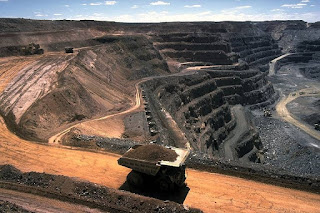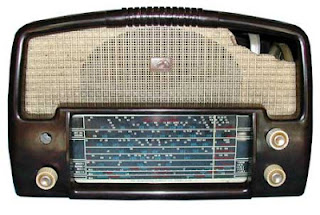MOUNTAIN SING TOGETHER TO REALITY
The Mountain that plenty deposit of earth Menirals that use for electronic device
"....Let the mountains sing together for joy.(Psalms 98:8)
IN THE RUGGED south-western mountains of Bolivia, the largest salt plain on earth, Salar de Uyuni, stretches dead flat and brilliant white for over ten thousand square kilometres. Beneath the dry plain is a lake of brine up to 20 metres deep and in its salty depths lithium and magnesium chloride can be found. Salar de Uyuni is famed for its alien landscape and draws thousands of cashed-up tourists every year, but according to reports, the Salar could also be the site of the world's richest reserve of lithium.
Alongside the technological innovation of the last 20 years is the race to keep up with demand for minerals used in electronic devices - some experts believe supply is lagging behind. Lithium is one such mineral.
A recent report by The Institute of Sustainable Futures titledPeak Minerals in Australia: a review of changing impacts and benefits, raises concerns about the future supply of minerals and says while few metals are in danger of complete physical depletion, many are becoming harder to extract.
Director of Engineering at Monash University and co-author of Peak Minerals in Australia, Professor Gavin Mudd says the cost of extracting minerals could affect future supplies.
"Sometimes the question is not how much is left, it's what the environmental cost of getting those resources out of the ground is.
"So when we're looking at products, whether it be a mobile phone, LCD screens or whatever, we do need to understand there is an environmental cost in terms of primary supply from mining," he says.
Professor Mudd says for newer elements being mined, it is hard to tell how much supply is left because they appear as trace elements and not mined exclusively.
"If we look at the rarer metals like gallium [and] indium for example, we don't have any mines just for gallium . . . some of those types of metals are intimately linked to things like how much copper we have or how much zinc we have.
"So we don't really know how to answer the question of 'are we likely to run out' except to say there is concern over the ability to keep supply going."
Indium crumbs
Indium is a trace element that has been in commercial use only in the last 20 years. Professor Michael Cortie, Director of the Institute for Nanoscale Technology at the University of Technology Sydney says demand for indium has been driven by the rapid up-take of flat-screen monitors and mobile phones that use LCD screens.
In flat-panel devices such as LCDs and touch-screen mobiles, indium tin oxide (ITO) is used as a thin coat around the screen. This thin layer of ITO conducts electricity away from the front panel - a technical innovation necessary for the trend towards touch-screen monitors.
"The problem is, unfortunately, indium is relatively scarce in the crust and wherever it does occur, it occurs in groups and so to my knowledge, it is never mined directly for its own sake - it's always a byproduct of something else.
"If indium was a byproduct of a mine producing copper or zinc for example, when that mine closes down because of falling copper or zinc prices, it is no longer viable to mine indium for its own sake," Cortie says.
The U.S. Geological Survey 2010 notes that 600 tonnes of indium was refined in 2009, but says no indicators are available to say how much may be left in reserves around the world.
Professor Chennupati Jagadish, Head of Semiconductor Optoelectronics and Nanotechnology at the Australian National says material scientists are looking at aluminium dope zinc oxide as an alternative to indium.
"Aluminum has got really high abundance and zinc has got really high abundance, so from that point, it's not really an issue," he says.
Silicon dreams
The electronics world has long been characterised by silicon. Professor Jim Williams from the Australian Research Network for Advanced Materials at the Australian National University says while silicon is abundant, refining it for use in electronics has become harder.
"The silicon chip industry is fortunately based on silicon which is the second most abundant element [in the Earth's crust] and there's not an abundance problem. But there certainly are issues with processing silicon.
"You can make it very pure, but some of the steps in purifying it, some of the steps in processing it to make it into chips have toxicity issues. That's not a result of silicon itself but some of the other chemicals that are used in processing," he says.
The kind of silicon (which is extracted from sand or quartz) used for computers must be ultra pure.
As Professor Cortie explains, "In order to save money with purification, [you need] to start with the purest possible sand or quartz you can get."
He adds pure forms of silicon are also needed for use on solar cells. But the shortage of pure silicon means increased cost.
"It's all about money - if you're prepared to pay for silicon, of course you can get some," he says.
The race for trace elements
Tantalum is another element that has been increasingly mined for its usefulness in modern technology. It is used as a capacitor for mobile phones.
While there is no shortage of tantalum, it is considered politically risky - tantalum mines in the Congo have been known to be run by militia rebels who mine illegally and exploit their miners. In 2009, the world mined 1,160 tonnes of tantalum, 100 tonnes of which came from the Congo. Fortunately, Australia is well placed to capitalise on our growing need for tantalum. It produced 560 tonnes in 2009 and is considered to have plentiful reserves of about 40,000 tonnes.
An increased interest in sustainable living has also contributed to demand for lithium and gallium. Rechargable lithium-iron batteries are beginning to replace nickel-cadmium batteries and are widely used in batteries for wireless devices, while gallium (a byproduct of bauxite and zinc) is being used for solar cells and LED lights.
While Salar de Uyuni could contain large amounts of lithium, it has yet to be mined for resources - Bolivia's leaders are currently negotiating to nationalise the mining operation. As of 2009, the U.S. Geological Survey lists the total world reserves of lithium at 9,900,000 tonnes.
Professor Cortie believes despite concern about the supply of minerals, consumer demand will drive commercial competitors to work together to come up with a solution.
"I think they [manufacturers and commercial competitors] realised to stay ahead of the game, they have to have the latest technology and if there's a problem with the material, they need to find something better or a solution."
Professor Mudd says better infrastructure for recycling minerals could go a long way in preserving elements and ensuring longevity of supply.
Electronic industries and manufacturers have previously collaborated to recycle minerals. Copper and gold used for wiring on electronic equipment for example are successfully recycled at electronic waste recycling plants. Gallium is already extracted from scrap metal.
Raw Minerals use for electronic device
Man Invinted radio a "electronic device"
From earth minerals man pruduce a device that create sound and Music
Dross is a mass of solid impurities floating on a molten metal. It forms on the surface of low-melting-point metals such as tin, lead, zinc or aluminium oralloys by oxidation of the metal.(Psalms 119:119)
Surely there is a vein for the silver, and a place for gold where they fine it.
Iron is taken out of the earth, and brass is molten out of the stone.
He setteth an end to darkness, and searcheth out all perfection: the stones of darkness, and the shadow of death.
The flood breaketh out from the inhabitant; even the waters forgotten of the foot: they are dried up, they are gone away from men. As for the earth, out of it cometh bread: and under it is turned up as it were fire.
The stones of it are the place of sapphires: and it hath dust of gold.(Job 28:1-6)








Comments
Post a Comment